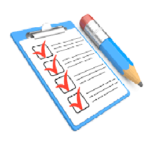Numbered, sequential directions may benefit students who have difficulty with getting started, sustaining a task or organizing work. Students can be taught to use the directions as a checklist to help them execute the task.
Example:
Did you?
1.) Put your name on the paper?
2.) Check model for reminder of how to solve addition problems?
3.) Read problem?
4.) Begin to solve in the ones column?
5.) Compute problem?
6.) Ask yourself: Does the answer make sense?
7.) Check your answer with a peer?
Further Reading:
Understood.org – Four Ways Kids Use Self-Monitoring Tools
Created by Kathy Furlong Silverio
Reviewed by Louis Olander
Categorised in: (1) Perception, (3) Comprehension, (6) Executive Function, ACTION AND EXPRESSION, REPRESENTATION
